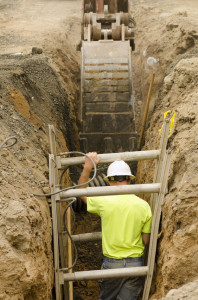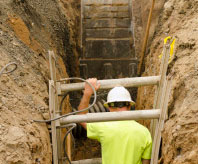The role of civil engineering in disaster response and recovery
 Disasters can strike without warning, leaving communities devastated and needing urgent assistance. From earthquakes and hurricanes to floods and wildfires, the impact of disasters can be catastrophic, causing widespread damage to infrastructure, homes and businesses. Civil engineers like ours can play a critical role in disaster response and recovery efforts in these situations. In this blog post, we will explore the importance of civil engineering in disaster response and recovery, and the role that civil engineers play in rebuilding communities after disasters.
Disasters can strike without warning, leaving communities devastated and needing urgent assistance. From earthquakes and hurricanes to floods and wildfires, the impact of disasters can be catastrophic, causing widespread damage to infrastructure, homes and businesses. Civil engineers like ours can play a critical role in disaster response and recovery efforts in these situations. In this blog post, we will explore the importance of civil engineering in disaster response and recovery, and the role that civil engineers play in rebuilding communities after disasters.
Disaster Response
Civil engineers are often involved in the emergency response efforts in the immediate aftermath of a disaster. They work alongside first responders, government agencies, and non-governmental organizations to assess the damage and identify areas that require urgent attention. This may include evaluating the safety of buildings and infrastructure, identifying areas at risk of collapse or further damage and assessing the availability of clean water, food and other essential resources. Civil engineers also play a critical role in establishing temporary infrastructure to support disaster response efforts. This may include setting up temporary shelters, roads and bridges to provide access to affected communities and temporary power and communication systems to help rescue and recovery efforts.
Disaster Recovery
Civil engineers are involved in every stage of the disaster recovery process, from planning and design to construction and maintenance. They work closely with community leaders, government agencies, and other stakeholders to develop comprehensive recovery plans prioritizing safety, sustainability and resilience. After the immediate response phase, civil engineers play a critical role in starting long-term recovery efforts. This starts with rebuilding and repairing damaged infrastructure, homes and businesses to help communities to recover and rebuild.
One of the critical challenges in disaster recovery is the need to rebuild infrastructures that will be resilient to future disasters. Civil engineers are well-positioned to help communities develop solutions designed to withstand any type of disaster, including infrastructure that is earthquake-resistant, flood-resistant or able to withstand high winds and storm surges.
Civil engineers also play a critical role in ensuring existing infrastructures are safe and functional after a disaster. This may involve conducting inspections and assessments to identify areas that require repair or replacement and developing maintenance plans to ensure that infrastructure remains safe and functional in the long term. In addition to physical infrastructure, civil engineers are also involved in rebuilding different types of social infrastructure. This includes rebuilding schools, hospitals and other community facilities critical to the community’s well-being.
Challenges and Opportunities
While civil engineers play a critical role in disaster response and recovery, they also face significant challenges. One of the critical challenges is balancing the urgency of disaster response with the need for long-term planning and resilience. In many cases, the focus on immediate response efforts can lead to infrastructure not being designed to withstand future disasters, putting communities at risk in the long term. Another challenge is the need to balance competing priorities in disaster recovery efforts. For example, there may be a tension between the need to rebuild quickly to support economic recovery and the need to prioritize safety and resilience in the long term.
Despite these challenges, there are also significant opportunities for civil engineers in disaster response and recovery efforts. These include the opportunity to apply innovative design and engineering solutions to complex problems, as well as the opportunity to work collaboratively with stakeholders to develop solutions that are sustainable and resilient in the long term. Civil engineers play a very critical role in disaster response and recovery efforts. They are involved in every stage of the recovery process, from assessing damage and developing recovery plans to rebuilding infrastructure and social systems. While significant challenges exist in these efforts, civil engineers also have opportunities to impact in the wake of disasters positively.
By prioritizing safety, sustainability, and resilience in their efforts, civil engineers can help communities to recover and rebuild after disasters. It is important to note that disaster response and recovery efforts are not solely the responsibility of civil engineers. Effective disaster response and recovery requires collaboration across various disciplines and stakeholders, including emergency responders, government agencies and community members. However, civil engineers play a critical role in this process, bringing their expertise in infrastructure planning, design and construction to bear on complex challenges. As the frequency and severity of disasters continue, the role of civil engineers in disaster response and recovery efforts will only become more important. Civil engineers have the skills and expertise to develop innovative solutions to complex problems and prioritize safety, sustainability and resilience in their efforts.
By working collaboratively with stakeholders and communities, civil engineers can help to ensure that disaster response and recovery efforts are effective, efficient and sustainable, and that communities are better prepared for future disasters. We hope you’ll contact our team at McNeil Engineering with any of your civil engineering project needs. You can count on our professionalism, safety and fortitude during any type of emergency or project we undertake. The result is the safest and most resilient structures specifically suited to your needs.

